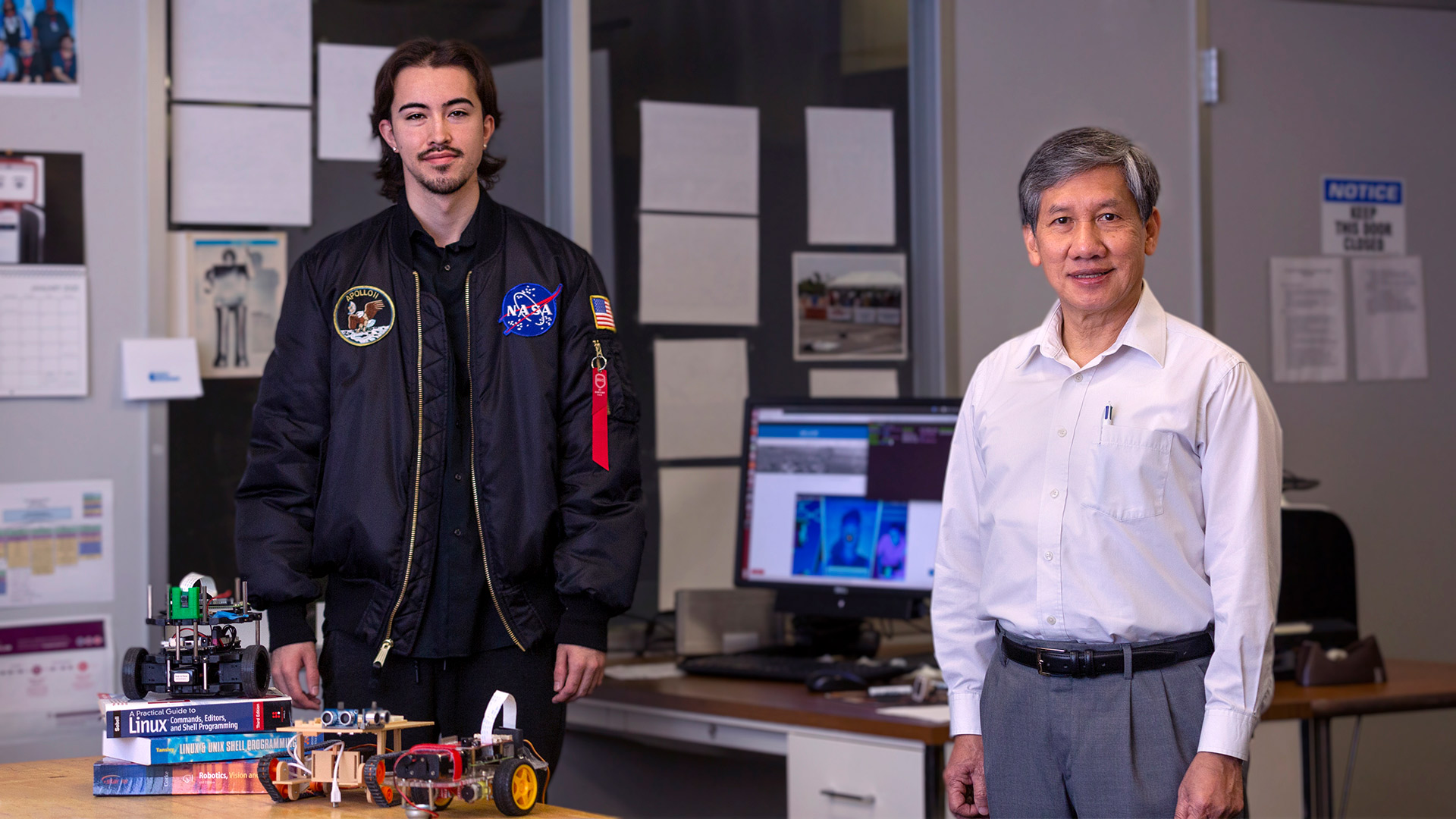- Future Students
- How to Apply
- Visit UHCL
- Admitted Students
- Tuition, Costs and Aid
- Degrees and Programs
- Contact Admissions
- Current Students
- Class Schedule
- Academic Calendar
- Advising
- Events
- Library
- Academic Resources and Support
- Student Services and Resources
- Alumni
- Lifetime Membership
- Alumni Events
- Update Your information
- Awards and Recognitions
- Give to UHCL
UHCL's Robotics Team eyes $1 million prize in NASA competition
March 1, 2021 | UHCL Staff

Space Center Houston and NASA have announced that University of Houston-Clear Lake is among the 22 international robotics teams qualifying for Phase 2 of the NASA Space Robotics Challenge. This allows the team to advance to the final competition, which has a prize purse of $1 million.
The international competition focuses on developing fully autonomous robotic system operations, navigation and decision-making capabilities that will be tested on robotic systems within a simulated lunar environment.
Assistant Professor of Computer Engineering Luong Nguyen organized UH-Clear Lake's Robotics Team in fall 2019, after the NASA Swarmathon competition ended.
"We had a Robotics Team every year, so when that ended, I looked for a new competition so our students would have the opportunity to compete," he said. "The team consists only of seniors in the Senior Project course, which is a class in the Computer Engineering department. It's a two-semester class, so I assembled the first team of 12 members — 10 from UHCL, and two from San Jacinto College, by our invitation."
By the spring semester, he said, he had four more UHCL students and entered the qualification round for the NASA Space Robotics Challenge. "All the work we do is in simulation," he said. "There is no hardware involved."
Keeping the Robotics Team consistently moving forward is not easy, Nguyen continued. "The team is made up of only seniors, so they graduate every semester. That means I always have to find new students and reorganize," he said. "It will be difficult to win; I always have to start from scratch. We have been promised $5000 for the work we have done so far."
Nguyen explained that the team was simulating the robotics rover that would be sent to another extraterrestrial body — perhaps Mars or the moon. "In this specific competition, the rover is sent to the moon and explores its surface, looking for materials," he said. "In the simulation, resources or volatiles are placed in different locations. We are supposed to program the rovers to look for those resources, and when they are found, we need to tell the simulation the location of the rover and the resource it found, and if we are correct, we score points. It's a bit of a hide-and-seek game."
Justin Tarwater, a transfer student who received his Bachelor of Science in Computer Engineering in December 2020, was a member of the Robotics Team during his senior year at UHCL. "I had never taken any course about robotics, but I learned so much from being on this team," he said. "More than anything, I got to learn the Linux operating system. On my resume, having this experience on the Robotics Team and learning Linux skills is a big plus, because a lot of people don't know anything about Linux."
He said his career goal was to work for a company like NASA, or perhaps Amazon or Microsoft. "I have seen job openings for robot-related fields, and I definitely think that after a year on this project, I have gotten some good experience with this."
With Nguyen's guidance, Tarwater said, he believes he is well prepared for whatever job he will ultimately find. "He's very supportive and he never gives up on any student," he said. "Even if something seems tough, he says, we will figure this out."
Nguyen said that with the graduation of Tarwater and many other members of the team, he is recruiting new members to begin the competition, which started in February and will last till July. "We have to finish what we started with another team. It sounds like a game, but there is a lot of technical knowledge required, and training a new group will take time," he said. "But, it's a wonderful experience for our students and that is my main reason to form this team."
Winners will be announced in September. As for the $1 million purse, Nguyen said, it will be split between the first, second and third-place winners.
Learning Linux is a very steep learning curve for students, and Nguyen said he has never had a student who has worked with it before. Moreover, the competition requires working knowledge of Robot Operating System (ROS), GitLab, Docker, good programming skills in C++, plus computer vision, robot localization and manipulation know-how.
"But afterwards, the experience they gain is very much what is needed to start working in the robotics industry," he said. "By participating in this competition, they can speak intelligently about robotics with a job interviewer, which can be incredibly helpful for employment after graduation."
Learn about UHCL's Computer Engineering program online.






